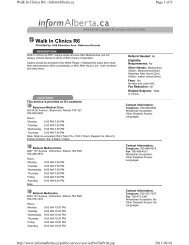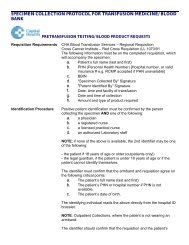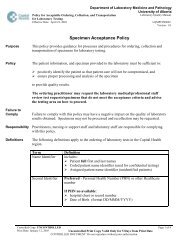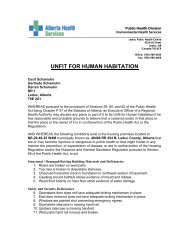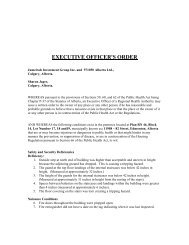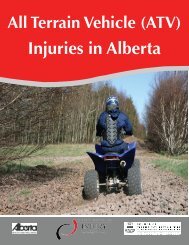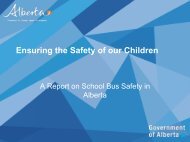'Walk and Ride Safely' Resource Kit - Capital Health
'Walk and Ride Safely' Resource Kit - Capital Health
'Walk and Ride Safely' Resource Kit - Capital Health
You also want an ePaper? Increase the reach of your titles
YUMPU automatically turns print PDFs into web optimized ePapers that Google loves.
Educator asks: “We have learned that there are safe ways of doing things <strong>and</strong><br />
unsafe ways of doing things. Just like when we learned about crossing the road<br />
safely. Do you think there is a safe way of getting on a school bus?”<br />
Class response:<br />
Yes<br />
Educator asks: “How many of you have ever heard the words ‘Danger Zone’ when<br />
we talk about school buses?” Educator may count the show of h<strong>and</strong>s.<br />
Educator asks: “Does anyone know what the ‘Danger Zone’ is?”<br />
Class response:<br />
Underneath the bus<br />
On top of the bus<br />
Touching the bus<br />
Educator asks: Those are all good answers, <strong>and</strong> you are real close. If you can<br />
touch the bus – you are way too close to the bus <strong>and</strong> in the ‘Danger Zone’.<br />
Educator discusses the ‘Danger Zone’ by drawing a bus on the board, overhead,<br />
or chart paper or by holding up the picture of the ‘Danger Zone’ located in the<br />
Student Information section of this manual.<br />
Educator asks: “Now class do you think there are any rules we should follow while<br />
we are waiting for the bus?<br />
Class response:<br />
St<strong>and</strong> in a group while waiting for the bus. No pushing or shoving.<br />
Stay out of the ‘Danger Zone’ until the bus driver lets you know it’s safe to get<br />
on. If you can touch the bus, you’re too close.<br />
Educator asks: “Now class do you think there are any rules we should follow when<br />
the bus arrives <strong>and</strong> we board the bus?<br />
Once the bus arrives, line up with the smaller children at the front. Get on the<br />
bus one at a time.<br />
Use the h<strong>and</strong>rail when getting on or off the bus.<br />
Educator asks: “How about when we are on the bus?<br />
Sit down right away <strong>and</strong> stay seated until you leave the bus.<br />
Face forward <strong>and</strong> don’t throw things inside the bus or out the bus window.<br />
Talk quietly <strong>and</strong> keep your head <strong>and</strong> arms inside the bus. Keep your feet out<br />
of the aisle.<br />
Educator asks: “What do we do when we get to where we are going?”<br />
Wait until the bus stops before st<strong>and</strong>ing. Move away from the bus <strong>and</strong> out of<br />
the ‘Danger Zone’ right away when you get off the bus<br />
You always look all four ways before crossing the road – left, right, ahead,<br />
<strong>and</strong> behind.<br />
Educator reminds class to always listen to school bus drivers – they’re in<br />
charge.<br />
Students might ask: “Why don’t school buses have seat belts?”<br />
Educator may say: “Some people are concerned about the lack of seat belts,<br />
but the interior of school buses are designed to protect the occupants in a<br />
collision without seat belts. This is called compartmentalization.”<br />
19



